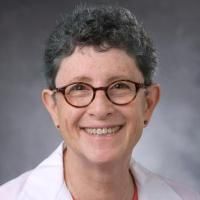Anti-fibrotic effects of different sources of MSC in bleomycin-induced lung fibrosis in C57BL6 male mice.
Date
2021-02
Journal Title
Journal ISSN
Volume Title
Repository Usage Stats
views
downloads
Citation Stats
Attention Stats
Abstract
Background and objective
IPF is a fatal and debilitating lung disorder increasing in incidence worldwide. To date, two approved treatments only slow disease progression, have multiple side effects and do not provide a cure. MSC have promising therapeutic potential as a cell-based therapy for many lung disorders based on the anti-fibrotic properties of the MSC.Methods
Critical questions remain surrounding the optimal source, timing and efficacy of cell-based therapies. The present study examines the most effective sources of MSC. Human MSC were derived from adipose, WJ, chorionic membrane (CSC) and chorionic villi (CVC). MSC were injected into the ageing mouse model of BLM-induced lung fibrosis.Results
All sources decreased Aschroft and hydroxyproline levels when injected into BLM-treated mice at day 10 with the exception of CSC cells that did not change hydroxyproline levels. There were also decreases in mRNA expression of αv -integrin and TNFα in all sources except CSC. Only ASC- and WJ-derived cells reduced AKT and MMP-2 activation, while Cav-1 was increased by ASC treatment as previously reported. BLM-induced miR dysregulation of miR-29 and miR-199 was restored only by ASC treatment.Conclusion
Our data suggest that sources of MSC may differ in the pathway(s) involved in repair.Type
Department
Description
Provenance
Subjects
Citation
Permalink
Published Version (Please cite this version)
Publication Info
Periera-Simon, Simone, Xiaomei Xia, Paola Catanuto, Ramon Coronado, Joanne Kurtzberg, Michael Bellio, Yee-Shuan Lee, Aisha Khan, et al. (2021). Anti-fibrotic effects of different sources of MSC in bleomycin-induced lung fibrosis in C57BL6 male mice. Respirology (Carlton, Vic.), 26(2). pp. 161–170. 10.1111/resp.13928 Retrieved from https://hdl.handle.net/10161/24724.
This is constructed from limited available data and may be imprecise. To cite this article, please review & use the official citation provided by the journal.
Collections
Scholars@Duke

Joanne Kurtzberg
Dr. Kurtzberg is an internationally renowned expert in pediatric hematology/oncology, pediatric blood and marrow transplantation, umbilical cord blood banking and transplantation, and novel applications of cord blood and birthing tissues in the emerging fields of cellular therapies and regenerative medicine. Dr. Kurtzberg serves as the Director of the Marcus Center for Cellular Cures (MC3), Director of the Pediatric Transplant and Cellular Therapy Program, Director of the Carolinas Cord Blood Bank, and Co-Director of the Stem Cell Transplant Laboratory at Duke University. The Carolinas Cord Blood Bank is an FDA licensed public cord blood bank distributing unrelated cord blood units for donors for hematopoietic stem cell transplantation (HSCT) through the CW Bill Young Cell Transplantation Program. The Robertson GMP Cell Manufacturing Laboratory supports manufacturing of RETHYMIC (BLA, Enzyvant, 2021), allogeneic cord tissue derived and bone marrow derived mesenchymal stromal cells (MSCs), and DUOC, a microglial/macrophage cell derived from cord blood.
Dr. Kurtzberg’s research in MC3 focuses on translational studies from bench to bedside, seeking to develop transformative clinical therapies using cells, tissues, molecules, genes, and biomaterials to treat diseases and injuries that currently lack effective treatments. Recent areas of investigation in MC3 include clinical trials investigating the safety and efficacy of autologous and allogeneic cord blood in children with neonatal brain injury – hypoxic ischemic encephalopathy (HIE), cerebral palsy (CP), and autism. Clinical trials testing allogeneic cord blood are also being conducted in adults with acute ischemic stroke. Clinical trials optimizing manufacturing and testing the safety and efficacy of cord tissue MSCs in children with autism, CP and HIE and adults with COVID-lung disease are underway. DUOC, given intrathecally, is under study in children with leukodystrophies and adults with primary progressive multiple sclerosis.
In the past, Dr. Kurtzberg has developed novel chemotherapeutic drugs for acute leukemias, assays enumerating ALDH bright cells to predict cord blood unit potency, methods of cord blood expansion, potency assays for targeted cell and tissue based therapies. Dr. Kurtzberg currently holds several INDs for investigational clinical trials from the FDA. She has also trained numerous medical students, residents, clinical and post-doctoral fellows over the course of her career.
Unless otherwise indicated, scholarly articles published by Duke faculty members are made available here with a CC-BY-NC (Creative Commons Attribution Non-Commercial) license, as enabled by the Duke Open Access Policy. If you wish to use the materials in ways not already permitted under CC-BY-NC, please consult the copyright owner. Other materials are made available here through the author’s grant of a non-exclusive license to make their work openly accessible.
